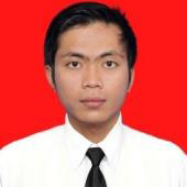
Imron
Work place: Software Engineering Technology, Samarinda State Agricultural Polytechnic, 75131, Indonesia
E-mail: imron@politanisamarinda.ac.id
Website: https://orcid.org/0009-0005-7863-9757
Research Interests:
Biography
Imron earned his Bachelor’s degree in Electronics Engineering Education from Yogyakarta State University in 2015. In 2020, he obtained his Master’s degree in Electrical Engineering from Gadjah Mada University. He is currently a lecturer in the Software Engineering Department at the Polytechnic of Agriculture in Samarinda. His research focuses on the Internet of Things (IoT) and software platform development. In November 2024, he successfully completed a short course on IoT at Chung Yuan Christian University, Taiwan.
Author Articles
Enterprise Architecture Design at PT Perkebunan Kaltim Utama Using TOGAF ADM
By Agus Ganda Permana Reza Andrea Imron Aulia Khoirunnita
DOI: https://doi.org/10.5815/ijeme.2025.05.02, Pub. Date: 8 Oct. 2025
Information systems and information technology have become indispensable in modern business operations, serving as critical tools for enhancing efficiency, streamlining processes, and supporting strategic decision-making. To ensure these technologies effectively meet organizational needs, enterprise architecture design plays a key role in aligning business goals with IT systems. This alignment not only improves operational efficiency but also lays the foundation for long-term organizational success. This study employs The Open Group Architecture Framework (TOGAF), focusing on its Architecture Development Method (ADM), to design an enterprise architecture tailored for PT Perkebunan Kaltim Utama. TOGAF ADM offers a structured, iterative approach to architecture development, encompassing phases from the initial planning stage to the final design and implementation analysis. Each phase is designed to integrate business processes with IT systems, enabling a cohesive and adaptive framework. PT Perkebunan Kaltim Utama, a company specializing in palm oil mill maintenance, faces significant operational challenges due to its reliance on manual processes and lack of integration. These inefficiencies hinder productivity and affect the company’s ability to meet strategic goals. This research systematically identifies the functional and technological requirements for PT Perkebunan Kaltim Utama’s business activities, laying the groundwork for an integrated solution. The proposed architecture design addresses these inefficiencies by providing a comprehensive blueprint for implementing a unified system. This system will not only enhance PT Perkebunan Kaltim Utama’s operational performance but also support its strategic objectives, enabling the company to remain competitive and responsive to industry demands. By integrating TOGAF ADM into its processes, PT Perkebunan Kaltim Utama can ensure a more effective alignment of business and IT, paving the way for sustainable growth and improved decision-making capabilities.
[...] Read more.Other Articles
Subscribe to receive issue release notifications and newsletters from MECS Press journals